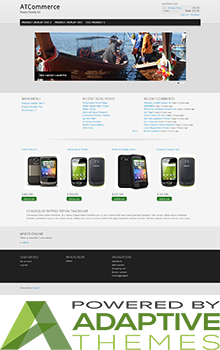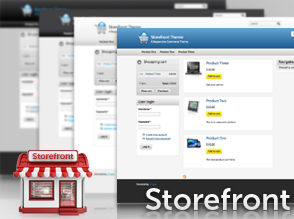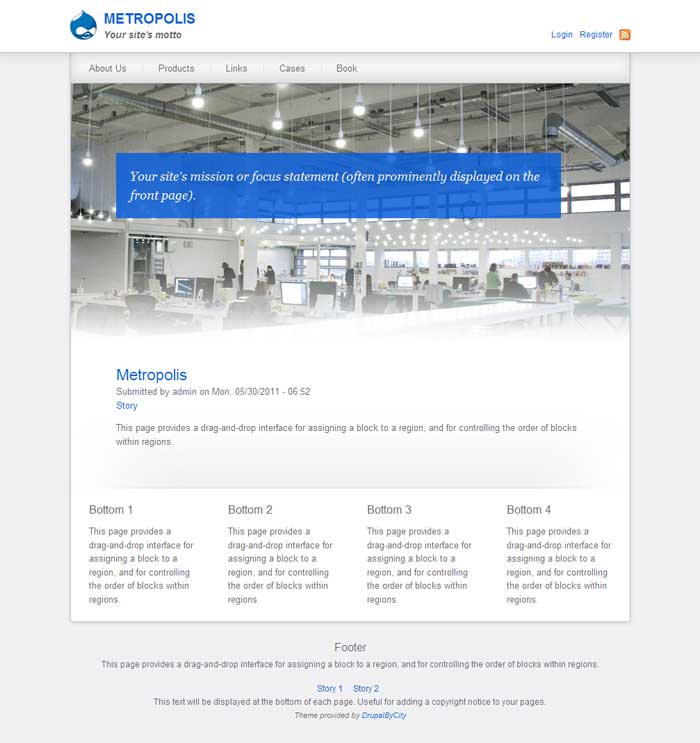
We’re excited to hear your project.
Let’s collaborate!

Building or “redecorating”? Are you putting together your online store from scratch or refurbishing your current one? No matter which one of these 2 scenarios fits your plan, you must be running your own “investigations” right now: which are the very best free Drupal 7 eCommerce themes out there?
Having a “top X” selection at hand would definitely speed up your “research”, right? A top including:
Well here's the selection of 5 Drupal themes for e-commerce that you should start your "investigations" with.
Jumpstart your Commerce Kickstart theme development using this base theme as a... strong “push”.
A responsive subtheme, a “kickoff” to your whole theme development process on Commerce Kickcstart, Omega Kickstart comes packed with all the crucial features:
Therefore, it makes the perfect impetus for kick-starting your theme development plans!
A “full-option” Drupal commerce theme we could say!
AT Commerce “spoils” you with out-of-the-box support for the Drupal Commerce module and Ubercart and .... “overwhelms” you with a heavy load of great features.
Now to name just a few:
And the list is a never-ending one.
As you can see, AT Commerce is a theme that not only that provides you with a wide range of e-commerce-specific functionalities, but with almost unlimited customization freedom, too. You'll get to put together your site's “signature” web design in no time, with no need to “get your hands dirty” in code.
From creating your “trademark” color scheme, to “playing” with all the settings that would impact the overall design and layout, your styling power is significant.
A word of caution: do keep in mind that this is a sub-theme; before you get to leverage all the above-mentioned AT Commerce features (plus a few more) on your own website, you'll need to install the latest version of the AdaptiveTheme.
It's this theme that will provide the needed core functionality
Here's another one of those free Drupal 7 eCommerce themes geared at helping you get a fully functional and attractive online store up and running in no time!
Moreover, the theme behind this theme “tempts” you with a Commerce Installation Profile bringing you, right out-of-the-box, all the needed functionalities to start selling your products.
A profile coming with built-in Drupal Commerce support and perfectly organized files enabling you to easily customize any eCommerce component you need to.
As its name suggests:
if it's a clean and “inviting” storefront that you need to implement on your eCommerce site, this is the theme to consider!
One that “plays well” with Drupal Commerce and that you can easily style up, further, adjusting it to your customer's future preferences.
In short: Storefront is that Drupal commerce theme that will implement a clean and appealing interface to your Commerce Kickstart installation.
And now if I am to highlight some of its key features:
Note: since this theme's compatible, out of the box, with the first version of Commerce Kickstart, the team behind it commits itself to making Storefront “play well” with the second version, as well.
A versatile (“fitting” all site types) and feature-rich theme “praising” simplicity.
This is a concise, yet comprehensive definition of Metropolis, one of the most popular free Drupal 7 eCommerce themes.
A more detailed definition would need to include “details” such as:
The END! These are the top 5 free Drupal 7 eCommerce themes that you should consider evaluating first. To check whether their built-in collections of eCommerce-specific features suit your own needs and goals or maybe just partially.

We’re excited to hear your project.
Let’s collaborate!